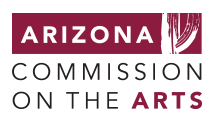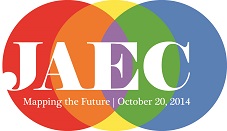 The biennial Joint Arts Education Conference (JAEC) convened at the Phoenix Art Museum on Monday, October 20. Presented through a partnership between the Arizona Commission on the Arts and the Arizona Department of Education, the conference attracted over 170 attendees, including arts educators, school administrators, teaching artists, and arts learning professionals from across the state.
The biennial Joint Arts Education Conference (JAEC) convened at the Phoenix Art Museum on Monday, October 20. Presented through a partnership between the Arizona Commission on the Arts and the Arizona Department of Education, the conference attracted over 170 attendees, including arts educators, school administrators, teaching artists, and arts learning professionals from across the state.
The day kicked-off with a pre-conference breakfast and panel discussion hosted by Arizona Citizens for the Arts. Opening remarks we’re offered by Gail Brown, Executive Director of Phoenix Office of Arts & Culture, and Marcelino Quinonez, Director of Luna Culture Lab and a Roosevelt School Board Member, who expressed his hope that quality arts experiences would be a central part of his five year-old daughter’s education. These remarks set the stage for a panel discussion led by Arizona Citizens for the Arts Executive Director Catherine “Rusty” Foley. Panelists included Dr. Steven J. Tepper (Dean, Herberger Institute for Design and the Arts, Arizona State University), Jacky Alling (Chief Philanthropic Services Officer, Arizona Community Foundation) and Todd Sanders (President, Greater Phoenix Chamber of Commerce). The panel was rounded out by JAEC keynote speakers John Abodeely, Deputy Director of the President’s Committee on the Arts and the Humanities, and Mary Luehrsen, Executive Director of The NAMM Foundation. The lively discussion covered the contribution arts education makes to higher student achievement in the classroom and beyond.
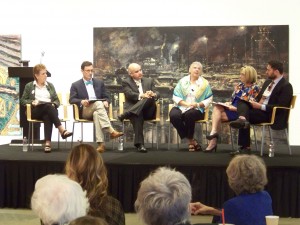 Dr. Steven Tepper defined college and career readiness as being “resourceful, resilient and creative”, qualities that are developed through education in artistic disciplines. This sentiment was echoed by Todd Sanders. Speaking from the perspective of an employer looking for qualified workers, Sanders identified education in an artistic discipline as a strong indicator of a quality applicant.
Dr. Steven Tepper defined college and career readiness as being “resourceful, resilient and creative”, qualities that are developed through education in artistic disciplines. This sentiment was echoed by Todd Sanders. Speaking from the perspective of an employer looking for qualified workers, Sanders identified education in an artistic discipline as a strong indicator of a quality applicant.
A recurring theme throughout the day was first presented during the panel discussion. Mary Luehrsen called on all attendees to actively advocate for the arts in their schools and communities. Jacky Alling further suggested that attendees endeavor to “embed” arts advocates in school boards, parent-teacher associations and all other arenas of influence to ensure that arts education has a strong voice in all discussions of schools and education policy.
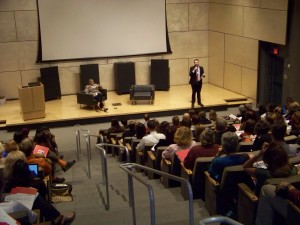 Following the breakfast, the conference commenced with an opening keynote session led by Luehrsen and Abodeely. Luerhrsen described a “lean forward” moment for the arts sector and urged attendees to remain on the leading edge of their profession to ensure that recent positive trends continue and broaden.
Following the breakfast, the conference commenced with an opening keynote session led by Luehrsen and Abodeely. Luerhrsen described a “lean forward” moment for the arts sector and urged attendees to remain on the leading edge of their profession to ensure that recent positive trends continue and broaden.
“This is a system you can build,” said John Abodeely, encouraging the audience to invest themselves not only in strengthening their own practice, but in the general sustainability and positioning of the arts in education. He warned that educators who focus solely on their own classrooms may see the whole arts program cut from their school.
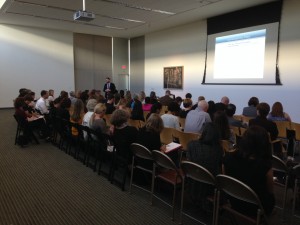 From there, conference attendees split off into a series of breakout sessions on a variety of topics. Luehrsen elaborated on her comments about arts advocacy during a session centered on the topic while Abodeely presented a session on the President’s Turnaround Arts initiative for struggling schools. A local cousin of that program, the Arts Commission’s own Strengthening Schools through Arts Partnerships, was the topic of a later session led by the Arts Commission’s Director of Arts Learning Alex Nelson, and featuring representatives of the four partnerships that received support through the program. The funding initiative and the programs it funded offered models for a broader discussion about effective program evaluation.
From there, conference attendees split off into a series of breakout sessions on a variety of topics. Luehrsen elaborated on her comments about arts advocacy during a session centered on the topic while Abodeely presented a session on the President’s Turnaround Arts initiative for struggling schools. A local cousin of that program, the Arts Commission’s own Strengthening Schools through Arts Partnerships, was the topic of a later session led by the Arts Commission’s Director of Arts Learning Alex Nelson, and featuring representatives of the four partnerships that received support through the program. The funding initiative and the programs it funded offered models for a broader discussion about effective program evaluation.
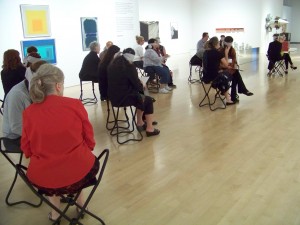 Elsewhere, techniques in close reading were explored in sessions focusing on the visual arts (led by Phoenix Art Museum’s Kathryn Blake) and in the performing arts (led by Korbi Adams and Laura Berger of Childsplay, and by Joshua Barths of Arizona Opera). Embody Learning, a teaching philosophy developed by Tucson’s Arts Integration Solutions (AIS), was the topic of a session led by AIS’s Julia Barwell.
Elsewhere, techniques in close reading were explored in sessions focusing on the visual arts (led by Phoenix Art Museum’s Kathryn Blake) and in the performing arts (led by Korbi Adams and Laura Berger of Childsplay, and by Joshua Barths of Arizona Opera). Embody Learning, a teaching philosophy developed by Tucson’s Arts Integration Solutions (AIS), was the topic of a session led by AIS’s Julia Barwell.
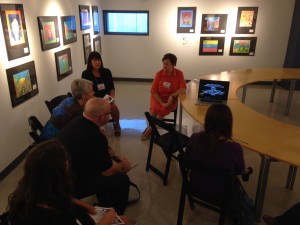 Other sessions offered instruction on teacher evaluation and student assessment (led by Janet Blum of Scottsdale Unified School District and Lynn Monson of Arizona Dance Education Organization) and a first glance at the most recent draft of Arizona’s Arts Education Standards (led by JAEC co-organizer Lynn Tuttle of that Arizona Department of Education).
Other sessions offered instruction on teacher evaluation and student assessment (led by Janet Blum of Scottsdale Unified School District and Lynn Monson of Arizona Dance Education Organization) and a first glance at the most recent draft of Arizona’s Arts Education Standards (led by JAEC co-organizer Lynn Tuttle of that Arizona Department of Education).
A highlight of the conference was the release of new data on how the arts are taught in Arizona. Presented as an update of the 2010 Arizona Arts Education Census data, first reported in the publication Engaging Students, Supporting Schools, Accessing Arts Education: Highlights from the Arizona Arts Education Census Project, these updated data were explained in depth by Robert Benson, Principal of Foothills Fine Arts Academy, during a particularly enlightening afternoon session. (These data will be made more widely available in November, 2014).
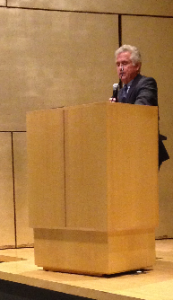 The conference closed with a final keynote session, again featuring Mary Luehrsen and John Abodeely, and a special appearance by Superintendent of Public Instruction John Huppenthal, who spoke passionately on the important role of the arts in public schools.
The conference closed with a final keynote session, again featuring Mary Luehrsen and John Abodeely, and a special appearance by Superintendent of Public Instruction John Huppenthal, who spoke passionately on the important role of the arts in public schools.
The staff of the Arizona Commission on the Arts would like to express their deepest gratitude to the Phoenix Art Museum and its staff for hosting the conference and the speakers and facilitators for their invaluable contributions. We would also like to thank Arizona Citizens for the Arts for their support of the morning forum, and the Arizona Department of Education’s Arts and Culture Advisory Group for their guidance.
See next time in 2016!

